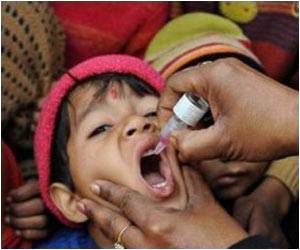Britain on Saturday lifted the last livestock restrictions imposed after last month's foot and mouth outbreak after experts said the disease had been "eradicated" from the country.
The surveillance zone around the outbreak site in rural Surrey, south-west of London, was removed.Additional controls on livestock shows and markets and a 20-day stand-still for animals following movement ceased from midday.
"I'm satisfied that foot-and-mouth has been eradicated from the UK in 2007," Britain's chief vet Debby Reynolds said Friday as investigators said the outbreak was probably caused by leaking drains, flooding and vehicles moving from nearby laboratories, without specifying the exact source.
The Health and Safety Executive (HSE) listed a series of failings at a government-run laboratory which shares a site with a private vaccine-producing firm at Pirbright in Surrey, south-west of London.
"It is now pretty clear that the outbreak originated at Pirbright but it isn't possible to pinpoint the exact source," said HSE chief executive Geoffrey Podger, presenting a report on the outbreak.
The Pirbright site is shared between the government-run Institute for Animal Health (IAH) and Merial Animal Health, a private company.
Advertisement
The outbreaks raised the spectre of a repeat of a 2001 crisis, in which up to 10 million animals were culled and which cost the national economy about eight billion pounds (11.7 billion euros, 16.0 billion dollars).
Advertisement
The HSE report and another investigation cited failings at the IAH.
Professor Brian Spratt, who conducted an independent assessment, said investigators had "found no problems" with biosecurity at Merial, while the government-run facility was known to be ageing and in need of repair.
In addition "there was some evidence of complacency about safety at IAH," he added.
Environment Secretary Hilary Benn accepted the reports' findings but said there was "no excuse" for the outbreak.
"This has been a very difficult time," he said.
"There can be no excuse for the fact that foot and mouth escaped from the Pirbright facility. It should not be possible. It should not have happened even in these extraordinary circumstances, and it must not happen again."
National Farmers' Union chief Peter Kendall blasted the laboratory leaks, which have cost farmers millions of pounds.
"I find it well-nigh incredible and quite indefensible that standards should have been as lax as these reports appear to reveal, given that those concerned were handling some of the most dangerous animal viruses on the planet," he said.
Source-AFP
SRM /J







